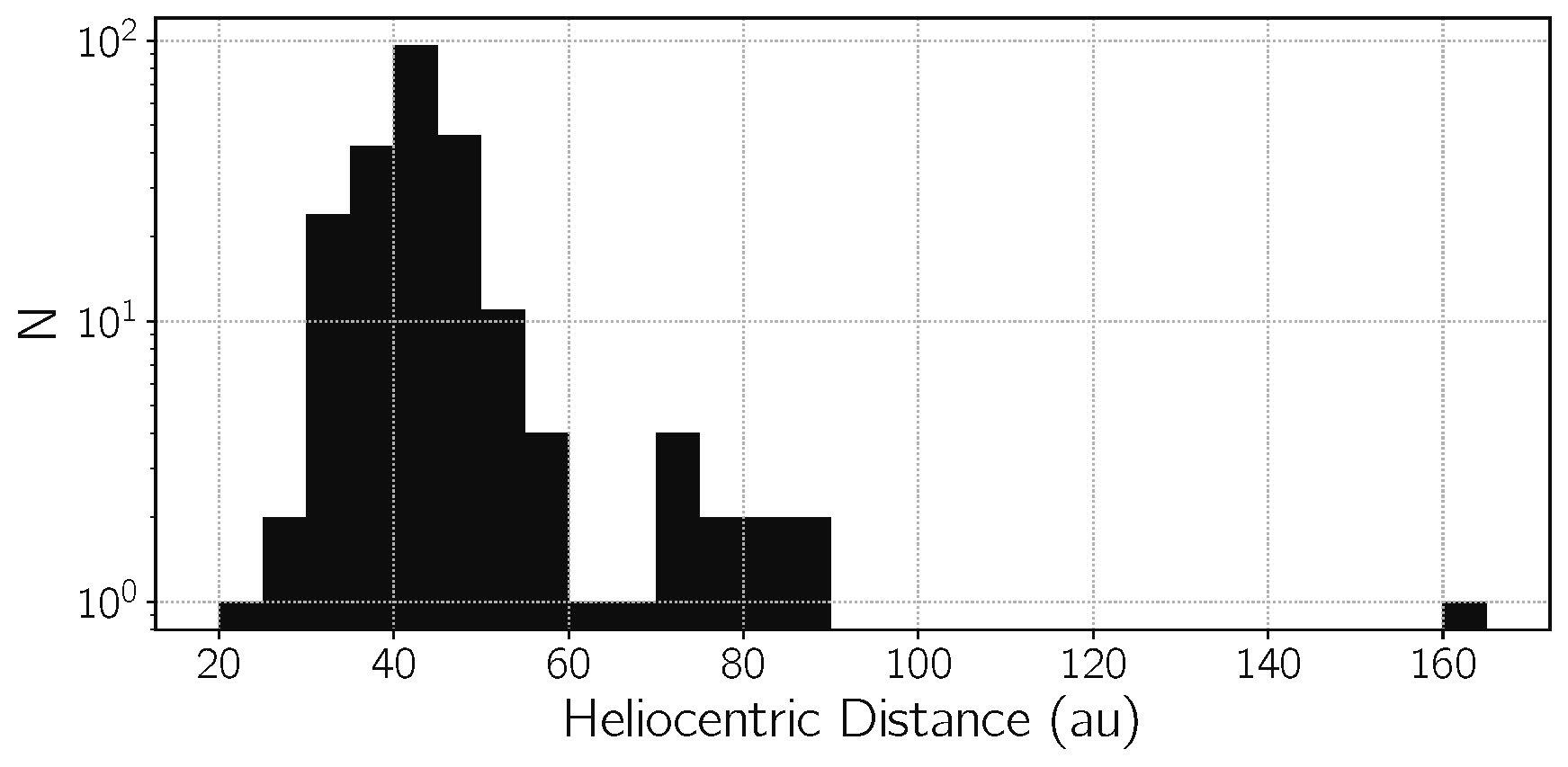Researchers looking for objects in the Kuiper Belt – the donut-shaped region beyond the orbit of Neptune containing icy objects including dwarf planet Pluto – appear to have found 11 objects far beyond it. It could be a major discovery – revealing, among other things, that the Solar System is much larger than we thought.
NASA’s New Horizons spacecraft was launched in 2006, heading to Pluto before taking a close look at Arrokoth, a small object far away in the Kuiper Belt. But there is no rest for NASA spacecraft, and teams have attempted to identify new targets for New Horizons to study up close, giving us a new angle on these far out objects.
Several searches have taken place, including by the Subaru telescope in Hawai’i. The telescope’s ultra-wide field camera looks for signs of objects which can then be followed up and confirmed by other telescopes. The team has discovered an impressive 239 trans-Neptunian objects as part of this survey.
While cool in its own right, the team now reports something even more interesting.
“The most exciting part of the HSC observations was the discovery of 11 objects at distances beyond the known Kuiper Belt,” Dr Fumi Yoshida of the Planetary Exploration Research Center, Chiba Institute of Technology, said in a statement.
“If this is confirmed, it would be a major discovery. The primordial solar nebula was much larger than previously thought, and this may have implications for studying the planet formation process in our Solar System.”
Most trans-Neptunian objects have been discovered between 30 and 55 astronomical units (AU), with one AU being the distance between the Sun and the Earth. After this distance, there is a drop-off in discovered objects. However, the team also found a number of objects at 70-90 AU, after a valley of relatively few objects.
“If confirmed, these objects betray the presence of a heretofore unrecognized abundance of distant objects that can help explain a number of other observations that otherwise remain at odds with the known Kuiper Belt, including detections of serendipitous stellar occultations, and recent results from the Student Dust Counter on-board the New Horizons spacecraft,” the team explained in a study.
It could imply that there is a second Kuiper Belt out there, waiting to be discovered.
The gap implies that there may be a second Kuiper Belt.
Image credit: Wesley Fraser/Subaru Telescope
More observations will be needed to confirm they are really there, though the team points to their impressive success rate in identifying targets for follow-up, including that 22 of 23 targets identified for follow-up by the Hubble Space Telescope were subsequently confirmed.
While potentially explaining a few things about our own Solar System, including chance observations of stars in the background appearing to dim, and dust impact rates detected by an instrument on board New Horizons itself, it may have implications in our search for life. Our Solar System, as far as we previously thought, looked a little bit unusual compared to other systems we have studied. This has been thought to help explain why life arose here – but if these observations are correct, and the Solar System extends further than we thought, maybe it isn’t so unusual after all.
“Our Solar System’s Kuiper Belt long appeared to be very small in comparison with many other planetary systems, but our results suggest that idea might just have arisen due to an observational bias,” Dr Wes Fraser, of the National Research Council of Canada, a co-investigator on the New Horizons mission science team and lead author of the study added in another statement. “So maybe, if this result is confirmed, our Kuiper Belt isn’t all that small and unusual after all compared to those around other stars.”
One paper is published in the Planetary Science Journal, the second is accepted to the Planetary Science Journal and available on pre-print server arXiv.
Source Link: Potential Major Discovery Of 11 Objects Far Beyond The Kuiper Belt
